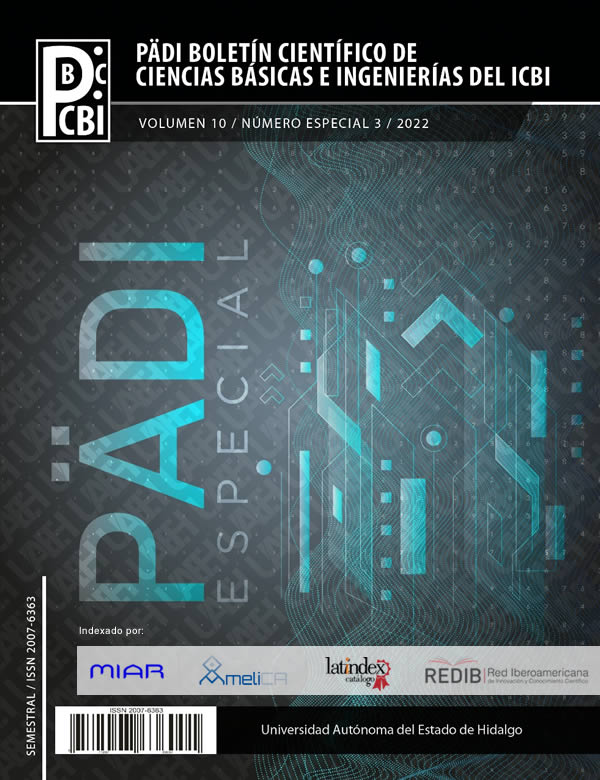Adaptable haptic interface for neuro-rehabilitation and assisted physical therapy
Abstract
Technologies and clinical protocols in care of disabilities that reflect motor limitation in the upper limb, establish certain criteria associated with what the patient communicates to the rehabilitation specialist or physiotherapist, as well as what the doctor perceives in the performance of the task, establishing no only one level of subjectivity in diagnosis and limited certainty in treatment. Human-robot physical interaction systems represent a tool that not only allows the establishment of metrics associated with patient performance, but also the self-adjustment of the rehabilitation task based on performance. In this research article, the use of guided haptic interfaces is promoted to induce neurorehabilitation conditions, particularly in patients who have acquired a stroke. It is proposed that the robot-patient task be established by loci defined by a PDMS-2 clinical protocol. Given the required adaptability, given the uncertainty of the patient, an intelligent control that guarantees convergence and stability in a robotic system with the user in the loop, is implemented. Second generation artificial neural networks, wavelet transform and IIR filters, constitute the proposed adaptive control scheme. Two types of haptic interaction schemes are presented, both with visual stimulation to establish hand-eye coordination; haptic scanning and guidance.
Downloads
References
Abdullah, H. A., Tarry, C., Lambert, C., Barreca, S., and Allen, B. O. (2011). Results of clinicians using a therapeutic robotic system in an inpatient stroke rehabilitation unit. Journal of neuroengineering and rehabilitation, 8(1):1– 12.
Åstrom, K. J. and Wittenmark, B. (2013). Computer-controlled systems: theory and design. Courier Corporation.
Bergamasco, M. and Ruffaldi, E. (2011). Haptic interfaces for embodiment in virtual environments.
Carr, J. H. and Shepherd, R. B. (2003). Rehabilitacion de pacientes en el ictus: recomendaciones de ejercicios y entrenamiento para optimizar las habilidades motoras. ELSEVIER, España.
Cudeiro Mazaira, F. J., Arias Rodrıguez, P., Robles Garcıa, V., and Corral Bergantinos, Y. (2015). Fundamentos de neurociencia y neurorrehabilitación en Terapia Ocupacional. Sintesis, España.
Daubechies, I. (1992). Ten Lectures on Wavelets. SIAM.
Domínguez-Ramírez, O. A., Jarillo-Silva, A., Parra-Vega, V., Ruíz-Sánchez, F., and Sepúlveda-Cervantes, G. (2012). Neurorehabilitacion robotica basada en guiado kinestesico local para miembro superior con movimiento involuntario. Revista Ciencia Universitaria, (2):19–29.
Guerrero-Sánchez, M. L. (2017). Evaluación de la función motora: Pdms-2. OCW - Universidad de Murcia.
Haykin, S. (2004). Kalman filtering and neural networks, volume 47. John Wiley & Sons.
Kuo, B. (1995). Digital Control Systems. Oxford University Press.
Lamas Sayans, S. (2015). Revisión sistemática sobre el empleo de robots en la rehabilitación del miembro superior tras un accidente cerebrovascular.
Levin, A. U. and Narendra, K. S. (1993). Control of nonlinear dynamical sys- tems using neural networks: Controllability and stabilization. IEEE Transactions on neural networks, 4(2):192–206.
Moyano, A´ . (2010). El accidente cerebrovascular desde la mirada del rehabilitador. Rev Hosp Cl´ın Univ Chile, 21:348–55.
Ogata, K. (1995). Discrete-time control systems. Prentice-Hall, Inc.
Ramírez-Zamora, J. D., Martínez-Terán, G., Domínguez-Ramírez, O. A., Ramos-Velasco, L. E., Parra-Vega, V., and Saucedo-Ugalde, I. (2015). Wa- venet control of a cyberforce system with human dynamic on passive haptic guidance tasks. pages 121–127.
Ramos-Velasco, L. E., Dom´ınguez-Ram´ırez, O. A., and Parra-Vega, V. (2016). Wavenet fuzzy pid controller for nonlinear mimo systems: Experimental validation on a high-end haptic robotic interface. Applied Soft Computing, 40:199–205.
Ramírez-Zamora, J. (2014). Control wavent de un sistema cyberforce con dina´mica humana en tareas de guiado ha´ptico pasivo. Tesis de maestr´ıa. Universidad Autónoma del Estado de Hidalgo.
Silva, F. A., Zarruk, J. G., Quintero, C., Arenas, W., Rueda-Clausen, C. F., and Silva, S. Y. (2006). Enfermedad cerebrovascular en Colombia. Revista Colombiana de Cardiología, 13:85 – 89.
Wu, C.-y., Yang, C.-l., Chuang, L.-l., Lin, K.-c., Chen, H.-c., Chen, M.-d., and Huang, W.-c. (2012). Effect of therapist-based versus robot-assisted bilate- ral arm training on motor control, functional performance, and quality of life after chronic stroke: a clinical trial. Physical Therapy, 92(8):1006–1016.













